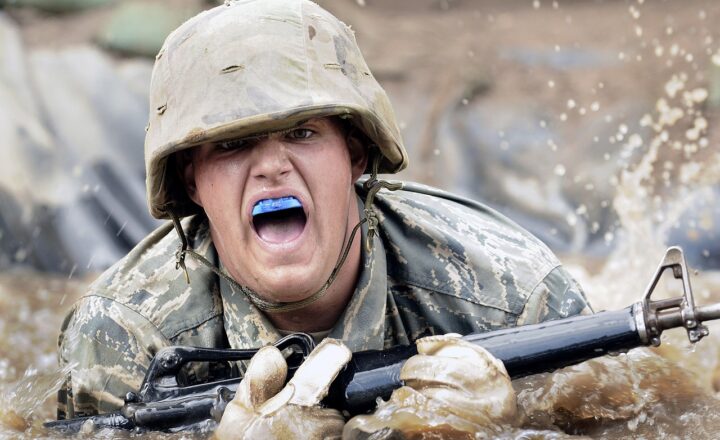War’s Hidden Lessons: What History Can Teach Us About Modern Conflicts
November 17, 2024

War, with all its chaos and destruction, is often seen as a force of regression. Yet, throughout history, each conflict has left behind not just scars, but invaluable lessons that can guide us in understanding modern warfare. By analyzing the events of the past, we can extract insights that remain relevant even today. This article delves into the hidden lessons embedded in history and how they apply to contemporary conflicts.
1. The Impact of Technology on Warfare
From the invention of the longbow to the deployment of drones, the evolution of technology has drastically changed the landscape of war. The World Wars are prime examples of technological innovation shaping conflict outcomes.
– World War I: The introduction of tanks and chemical warfare marked a significant shift in battlefield tactics. The trench warfare that characterized WWI demonstrated how technological advancements could lead to devastating stalemates.
– World War II: The advent of air power and the atomic bomb not only influenced military strategy but also changed political dynamics. Lessons learned from these conflicts highlight the necessity of adapting to new technologies in contemporary warfare.
Today, we see a similar shift with the rise of cyber warfare and drone technology, showcasing that understanding historical technological impacts can help predict modern military strategies.
2. The Importance of Alliances
History teaches us that strong alliances can significantly alter the course of a conflict. The alliances formed during both World Wars illustrate how collective security can deter aggression and provide strategic advantages.
– NATO Formation: Established after WWII, NATO emerged as a response to collective security needs in the face of potential Soviet expansion. The success of NATO shows the importance of unity among nations facing common threats.
In modern times, we see the importance of alliances in conflicts like the Syrian Civil War and the ongoing tension in the South China Sea. The ability to form coalitions can provide military support, intelligence sharing, and enhance diplomatic efforts, underscoring a lesson from our past.
3. Understanding Propaganda and Information Warfare
The role of propaganda cannot be overstated in shaping public perception and garnering support for military actions. Historical lessons include:
– The Vietnam War: Media coverage and public sentiment during this conflict showcased how information could sway public opinion and influence government policy. As a result, governments became increasingly aware of the need to control narratives.
– The Gulf War: The use of video footage and press releases shaped the American public’s view of the war, demonstrating the power of media in modern conflict.
In today’s world, the rise of social media has drastically changed the landscape for information warfare, requiring militaries and governments to adapt their communication strategies to counter misinformation and control narratives.
4. The Role of Economic Factors
Economic stability and warfare have a complex relationship. History shows that economic struggles often precede conflicts. The following events illustrate this:
– The Weimar Republic: The economic turmoil in Germany after WWI paved the way for the rise of Adolf Hitler and the onset of WWII. Economic distress can lead to political extremism and conflict, as societies seek scapegoats for their struggles.
– The Arab Spring: High unemployment rates and economic discontent acted as precursors for revolutions across the Arab world, highlighting the correlation between economic conditions and social unrest.
In modern-day scenarios, economic sanctions and trade relations play crucial roles in conflicts, as demonstrated in the ongoing tensions with North Korea and Iran. Recognizing these patterns can help policymakers address root causes that lead to warfare.
5. The Human Cost of War
One of the most tragic lessons from history is the immense human cost of war. Previous conflicts have shown that the consequences of war extend far beyond battleground statistics:
– Civilian Casualties in WWII: The sheer number of civilian casualties during World War II, especially during events such as the Bombing of Hiroshima and Nagasaki, highlighted the devastating impact of war on non-combatants.
– The Syrian Civil War: Today, the ongoing conflict continues to displace millions, illustrating that modern warfare often results in humanitarian crises.
Understanding the human aspect of conflicts emphasizes the importance of seeking peaceful resolutions to prevent suffering and build sustainable futures.
Conclusion: Learning from History to Shape the Future
The lessons from historical conflicts are profound and offer valuable insights into understanding modern warfare. As we navigate through complex disputes and geopolitical tensions today, remembering our past helps us make informed decisions for a more peaceful future.
By critically analyzing the impact of technology, the importance of alliances, the power of information, the economic backdrop, and the human costs of war, we can better prepare for and mitigate the conflicts of tomorrow. Learning from history isn’t just about avoiding the mistakes of the past; it’s about using those lessons to create a more harmonious world moving forward.
As we forge ahead into an uncertain future, it is crucial to remain vigilant and learn from the hidden lessons history reveals. Armed with this understanding, we stand a better chance of preventing future wars and fostering lasting peace.








